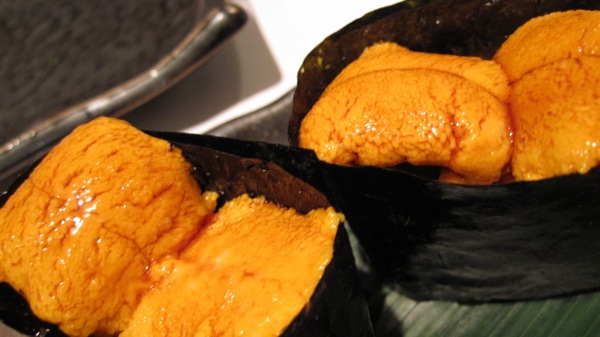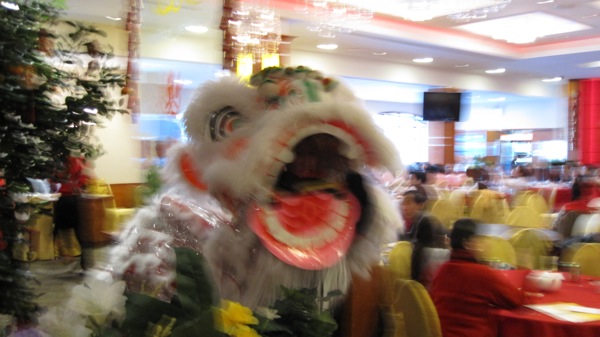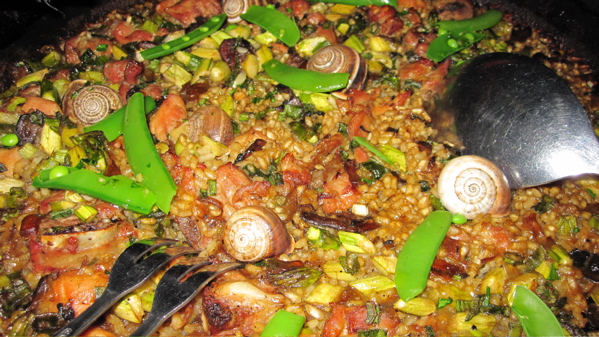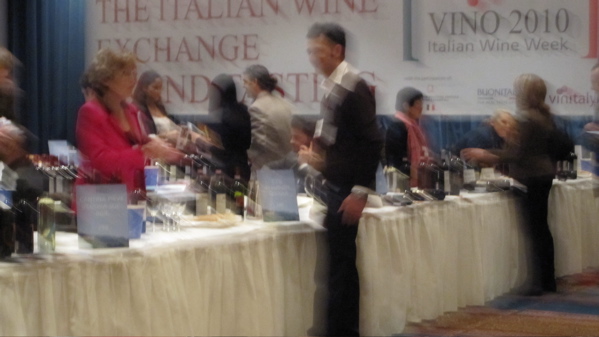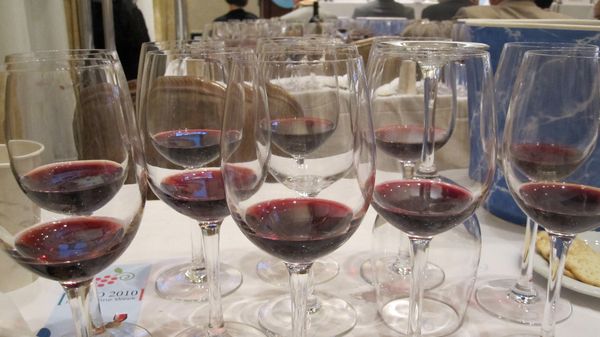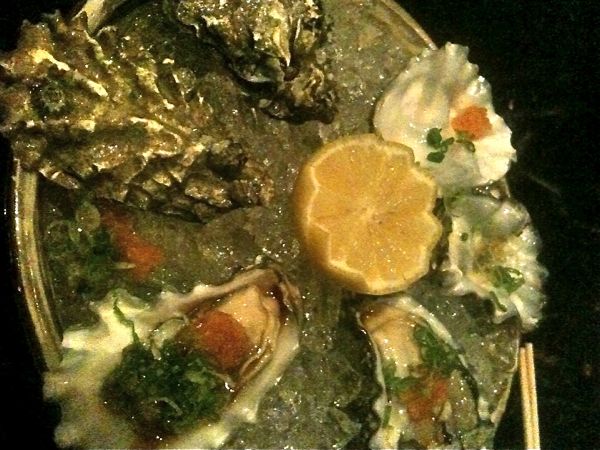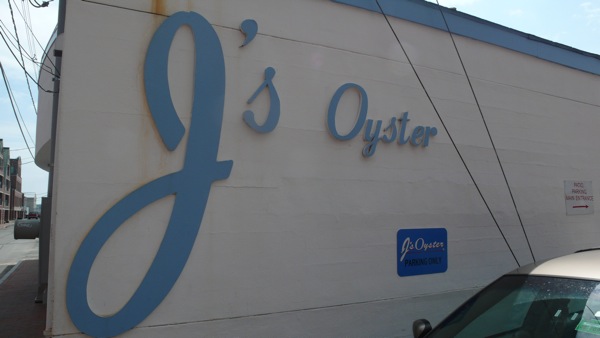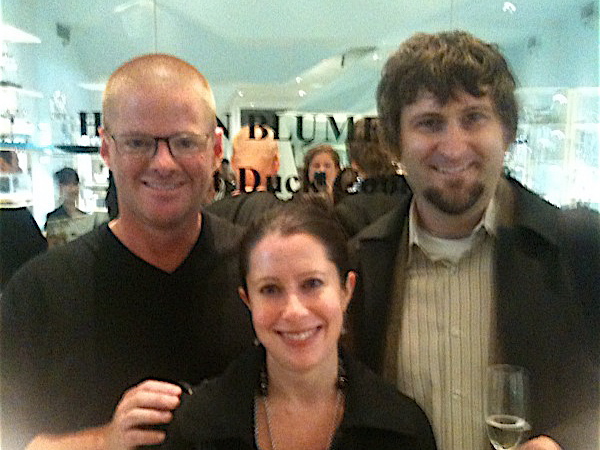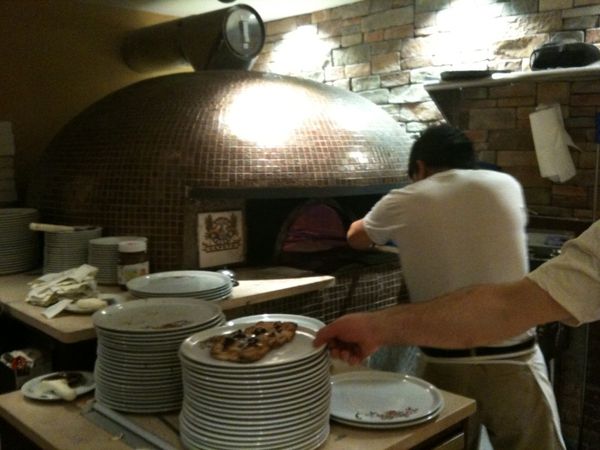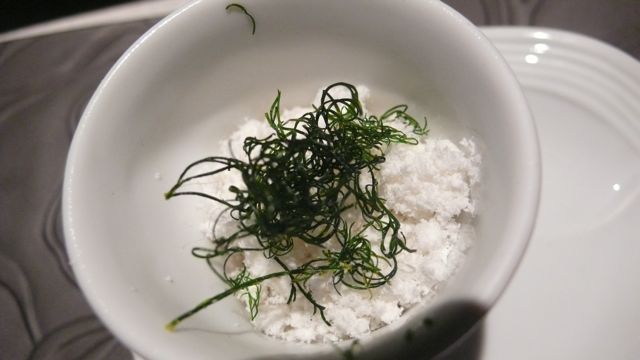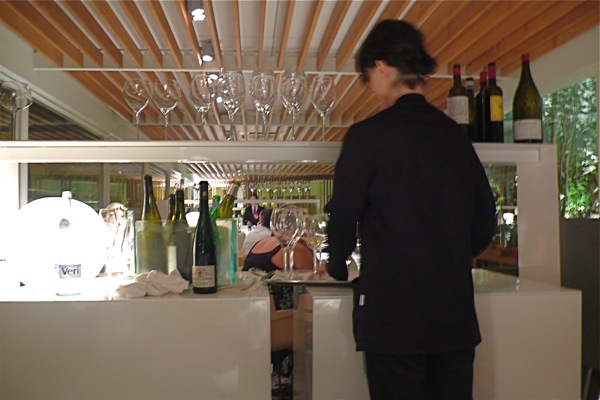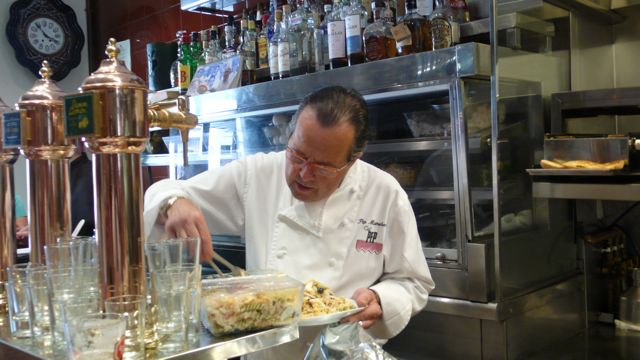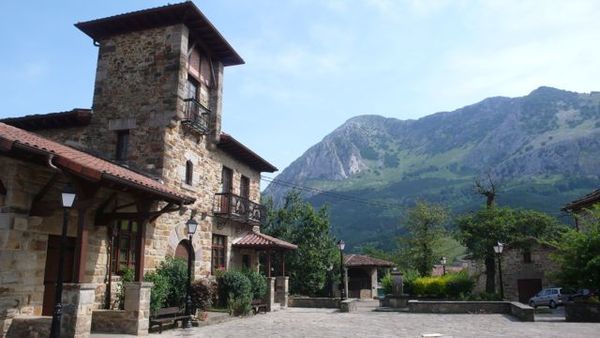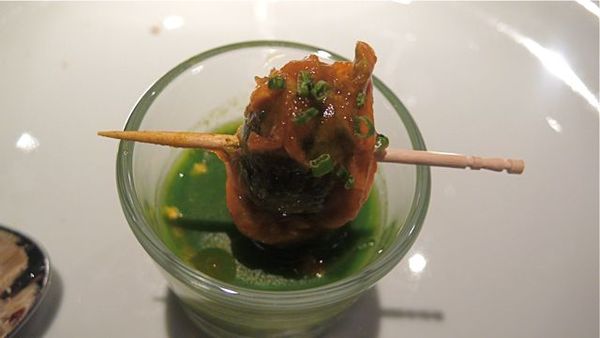AUTHOR liz humphreys
Jay and I are a little obsessed with uni. So we were really excited when we first went to Soto a couple of years ago for my birthday: The chef, Sotohiro Kosugi, ran a successful sushi restaurant in Atlanta before opening this intimate place in the West Village that specializes in uni in many guises.
Jay and I have never been that happy with Manhattan Chinatown dim sum. In our experience, it tends to be greasy, heavy on the fried items and not as fresh tasting as meals we've had in San Francisco, Vancouver and Hong Kong.
The restaurant is named after the crunchy, slightly caramelized rice that sticks to the bottom of the paella pan. Your server comes back at the end to scrap off the socarrat for everyone to enjoy -- and it truly is the best part, crispy with a yummy nutty flavor.
The seminar's moderator, Italian wine expert Charles Scicolone, noted that people often dismiss Puglia wines as "too jammy, pruney, and lacking in acidity," but most of the wines we tasted today proved that perception wrong. I learned there are three main grapes grown in Puglia: negroamaro, primitivo and uva di troia, also known as nero di troia and often combined with malvasia nera, which is used mainly as a blending grape.
The cool thing about Calabria is that the region’s wine producers almost exclusively use regional varietals – primarily gaglioppo, plus arvino, greco nero, and magliocco canino in lesser quantities. (Other regional grapes I've never heard of include nerello calabrese and lacrima nera.) We learned that the Calabria region produces varieties that have disappeared or never existed in other regions.
I hadn't eaten at En Japanese Brasserie in several years, during a New York Restaurant Week where all I remember is that we were served tastes in a Bento box and we saw Zac Posen. This time around, Jay had just eaten at En the week before and raved about the yumminess of the food, saying we needed to go back – and soon!
From the outside, the place wasn’t much to look at – and from the inside, it wasn’t either. J’s was more like a dive bar with food than a restaurant, with many diners eating at the U-shaped bar that dominates most of J’s interior and a few at tables scattered near the windows. The clientele appeared to be mainly locals sharing gossip about other locals (and easily identified by ordering non-seafood dishes like chicken salad) and a smattering of tourists ordering many, many plates of shellfish in all its forms.
One of the only exceptions was at the Fat Duck outside of London, where we figured the chef (Heston Blumenthal) was cooking since we had read he's nearly always in the restaurant, but we didn't see him. And we opted against buying the cookbook since it cost something like 160 pounds, or a whopping $300. (Most of the other cookbooks we bought were around $60.) After the most expensive meal of our lives, we couldn't justify spending even more on the book, nice memento though it would be.
So we were totally excited when we read last week that Heston would
Jay had done a lot of research before our trip to find a table for our last night, in Madrid. He settled on Gastro for two reasons: one, the chef, Sergi Arola, had trained at El Bulli and apparently was one of his most promising disciples, and two, he was also a rocker.
The restaurant was also set up in a slightly strange way with visible and large prep stations for every few tables. Our table ended up being directly next to a busy station where the servers kept coming and going (though as we reminded ourselves, we probably deserved the worst seat in the house considering our late arrival!).
Jay and I had been wanting to go to Cal Pep for years. Seven years, in fact – since the last time we visited Barcelona. At that time, we actually wandered by the restaurant (one of the top-rated tapas places in the city) several times, but first were put off by the long lines outside of it, and then when we actually went in, totally intimidated by the lack of a menu. With our poor to non-existent Spanish, we weren’t sure how we would order beyond pointing at the glorious seafood piled in the cases behind the counter.
For our next dish, we ordered the Palamos prawns, very lightly grilled with salt on top. The meat was very tender, almost sushi-like, with a slight smoky flavor. We finished them off by sucking out the meat (and other assorted items) in the heads, which had more of a briny seafood flavor but still tasted nice and smoky. We could have eaten dozens more of these.
Just after we were seated and started to calm down, our server asked if we’d like to see the kitchen. Not really knowing what was going on, we were led back into the kitchen where the 40-something chef himself, Andoni Luis Aduriz, shook our hands and started chattering away in Spanish or Basque (we couldn’t be sure), translated into English by his sous-chef. He explained that his philosophy was to use pure, simple, and local ingredients, with nothing fancy like “foams.” (Interesting because Aduriz used to cook with Feran Adria at El Bulli, which pioneered the entire foam movement.)
Another change from any of the restaurants we’d visited so far: The server actually walked us through the menu (in English, also unlike any of the places in France where it was pretty much French or nothing), and gave us choices for several dishes (lobster vs. squid, as well as choices for the fish and the meat), and even asked us how we would like everything prepared – how progressive! And Jay and I didn’t even have to choose the same things, imagine! Our server also steered us toward a bottle of the house red, a 2001 Arzak Rios Alta
